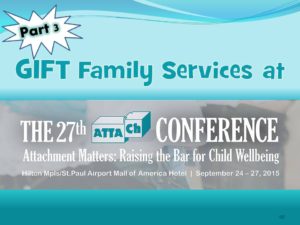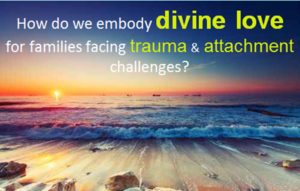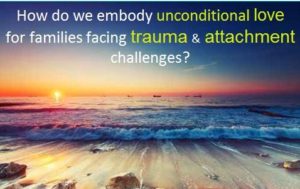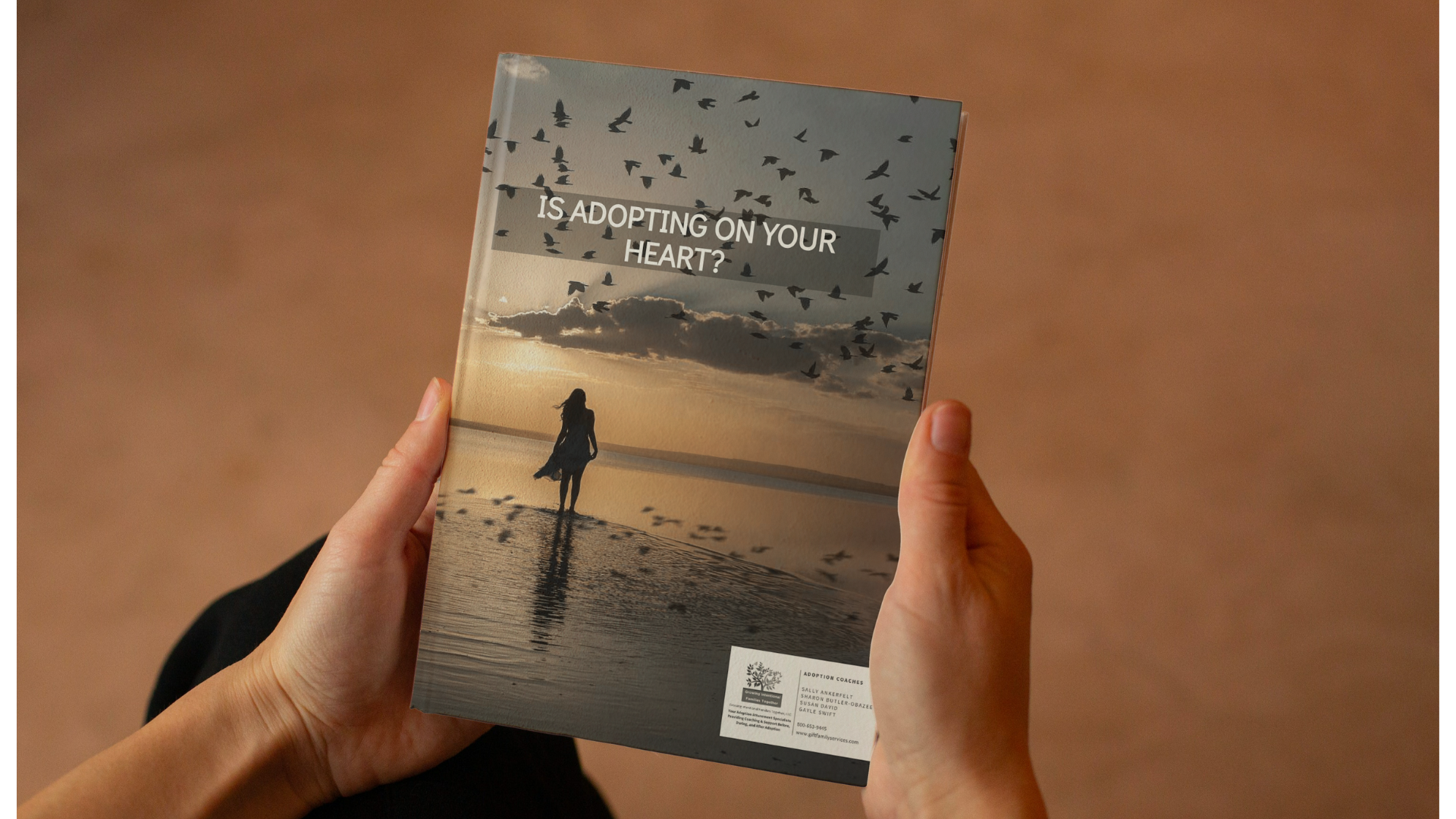 Part 3 of a 4 Part series examining the promise of faith communities as sources of healing and connection and GIFT coaches’, Sally Ankerfelt and Susan David’s recent presentation at the 2015 ATTACh Conference in Minneapolis, Minnesota.
Part 3 of a 4 Part series examining the promise of faith communities as sources of healing and connection and GIFT coaches’, Sally Ankerfelt and Susan David’s recent presentation at the 2015 ATTACh Conference in Minneapolis, Minnesota.
If faith communities are sources of healing and connection, why don’t I feel that way? Sound familiar?
Something is going on between what is really happening in our faith communities and this ideal coherent integrated faith community that offers unconditional love and acceptance. It is an ongoing tension between influence on the one hand and acceptance and love on the other. To heal and connect our congregations so that they can truly be what we think and have heard others ask for in a faith community requires a paradigm shift.
 Last week we talked about developing the areas of integration and promoting a healthy, coherent system that promotes well-being. And beyond that, Andrew Solomon, in his book, Far from the Tree, speaks about the need for those with extraordinary children, children who fall out of what would be considered “normal” to some, to have a community in which they belong and are loved and accepted. He identifies that many families and communities in which people live are structured vertically. They have a “passing down” structure. It is natural for us to have our children to want to have certain values, behave in certain ways, and love certain things. When this does not happen or our child is so different from us, there can be struggle and tension.
Last week we talked about developing the areas of integration and promoting a healthy, coherent system that promotes well-being. And beyond that, Andrew Solomon, in his book, Far from the Tree, speaks about the need for those with extraordinary children, children who fall out of what would be considered “normal” to some, to have a community in which they belong and are loved and accepted. He identifies that many families and communities in which people live are structured vertically. They have a “passing down” structure. It is natural for us to have our children to want to have certain values, behave in certain ways, and love certain things. When this does not happen or our child is so different from us, there can be struggle and tension.
Solomon also mentions faith communities as often being primarily vertical. We seek to pass down the faith to the next generation, teach certain beliefs and instill a certain moral stance to our children. We have expectations of behavior and rites of passage to be met like confirmations and bar and bat mitzvah. In the Lutheran church, we have Luther’s catechism that we want to teach to our children. In our baptismal service, we say, we hope that the child will grow “in faith, love, and obedience to the will of God.” That is not unlike other faith communities and of course, a very natural tendency.

This natural tendency toward vertical identity creates a tension for faith communities because for families whose children fall outside of the norm, they need more of a horizontal community, one that emphasizes acceptance and belonging.
Andrew Root, seminary professor, youth director and author, in Relationships Unfiltered, admits that even though it is our best intentions, we often miss the mark because we are preoccupied with passing down the faith, getting new members, making model citizens, etc. This kind of motivation leads to a fracture or broken belonging. Root admits that the faith community might fall short because it seeks to influence first. Though it is often times relational, its primary goal is to INFLUENCE. So what Susan and I are proposing here is that similar to an individual, the faith community can think about and learn to act in such a way that understands building relationship as a source of comfort and healing as the primary focus and not simply to influence.

What we need is not the influence or the teachings but our immediate needs of wanting to be understood, accepted, and loved. In the community’s mindset, in their belief system, in their behavior there needs to be a systemic shift in the interaction of the faith community that is about integrating heart, soul, mind, brain and relationship. SO what does that look like? As members of a faith community grappling with trauma “disturbances”, if we were connected, open, harmonious, engaged, receptive, emergent, noetic, compassionate and empathic (a COHERENT System), would we not be a community integrated in love? That sounds a little like unconditional love, doesn’t it? And we’d ask you further, does that not sound like how faith communities profess Divine love – God’s love – to be? Imagine how this would be, then for them to experienced God’s love, through our relationship with them.
 How might this shift challenge us?
How might this shift challenge us?
Join us next week as we offer some suggestions that can shift our faith communities away from influence and toward integration. We will discuss specific integration adaptations that you can begin to discuss and work to implement with your own faith communities.



A lot of thought provoking ideas in this blog. I see this as a challenge to faith based communities to step up an love the way God loves us.
Hi Lynn, Sally and I did hear a lot of comments about the need for faith communities to be more supportive. We also heard from some that they do feel their church (in this particular case) was “there” for them. I think it is easy to get lost in teaching the doctrines as well as acquring new members. After all, the bills must be paid. But Sally and I don’t see this integration model as counter to any of that. In the long run, it should really bolster a congregation.